#rebirth 2004
Explore tagged Tumblr posts
Text




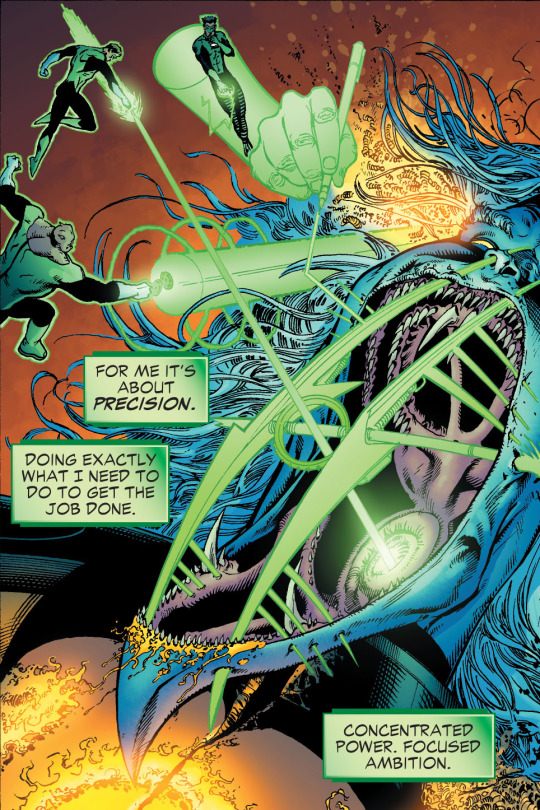
Genuinely charmed by how Hal thinks about his fellow lanterns and describes how they use their rings. Though, Kyle, sweetie, now may not be the time to worry about your linework. <3
bonus killowog under the cut

#green lantern#rebirth 2004#guy gardner#john stewart#kyle rayner#killowog#hal jordan#hal jordan being hard for his boys#they are all dating ur honor and killowog is the DD#hal like “these are my blorbos and i love them so much 🥺🥺🥺”#live reblogglelog
116 notes
·
View notes
Text



2004's Green Lantern: Rebirth Vol.1 #1 (turning 20 theses days, feel old yet ?) cover by artist Ethan Van Sciver.
#Green Lantern#Hal Jordan#The Return of Hal Jordan#Geoff Johns#DC#Geoff Johns's Green Lantern#DC Comics#art#cover#cover art#2004#green lantern rebirth#green lantern rebirth by Geoff Johns & Ethan Van Sciver#Ethan Van Sciver#blackest night#parallax#renaissance#rebirth#cool cover art#The Spectre#20th anniversary#2000s comics#2000s#00s#lantern#war of light#comics
37 notes
·
View notes
Text
finally got my hands on SAW REBIRTH.

it will be signed by tobin bell come april
36 notes
·
View notes
Text










📟 ꒱ what can i do, what can i say?
wa horrorcon / birthday pic dump!! :3 ft. some cool cosplayers 'n my baby brother hehe!
#amanda young#dead by daylight#horror#dbd cosplay#dead by daylight pig#dead by daylight cosplay#dbd the pig#the pig#irl amanda young#amandas rebirth#amanda young cosplay#amanda saw#dbd saw#saw 2004#saw franchise#saw movies#sawposting#saw irl#Spotify
37 notes
·
View notes
Text

reading the saw: rebirth comic right now
#saw: rebirth#saw comic#sawposting#saw franchise#saw 2004#amanda young#mark hoffman#john kramer#jigsaw
30 notes
·
View notes
Text
Partner made an upscaled rip of the MP4 they converted from the original SWF file of the voice acted SAW: Rebirth comic, so if you've been waiting 10+ years for a proper quality rip, here it is! 🥵
SAW: REBIRTH HD
They're finding other hard to find SAW media, too 😎
#saw franchise#saw x#saw 2004#saw movies#saw comics#saw animated comics#horror media#ken talks#Ken rambles#saw 2005#saw 2#saw rebirth#saw rebirth comic#saw#saw series#archive#archival
22 notes
·
View notes
Text

#spectre (2004) we love you#to be deleted#also do you know how much it breaks my heart this gorgeous art is from green lantern rebirth#that entire book is so pretty but the content. straight ass utterly rancid
61 notes
·
View notes
Text
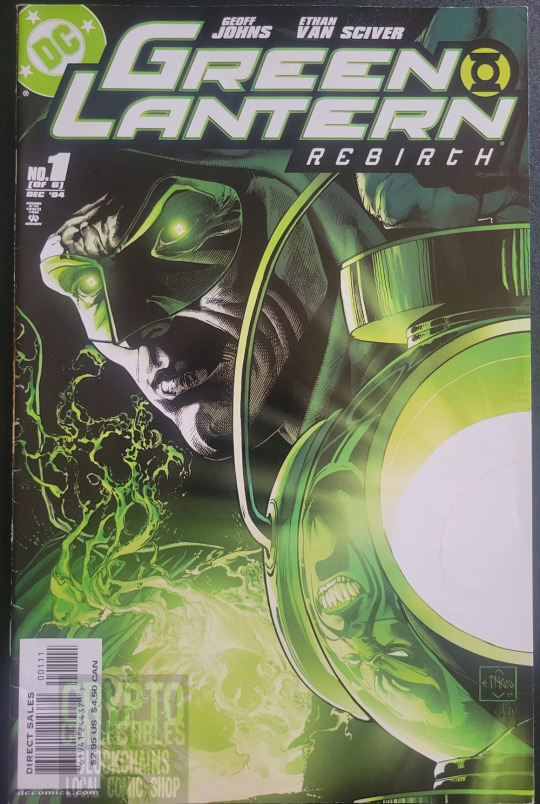
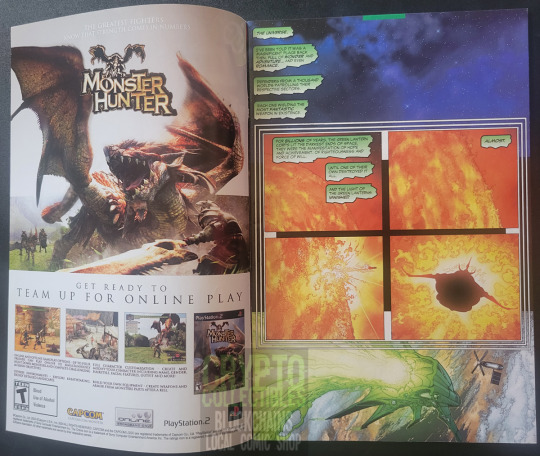
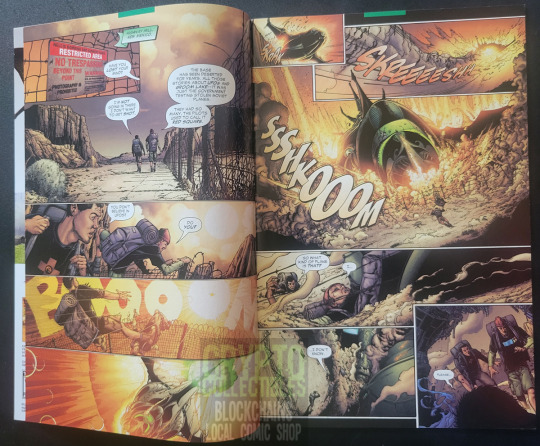
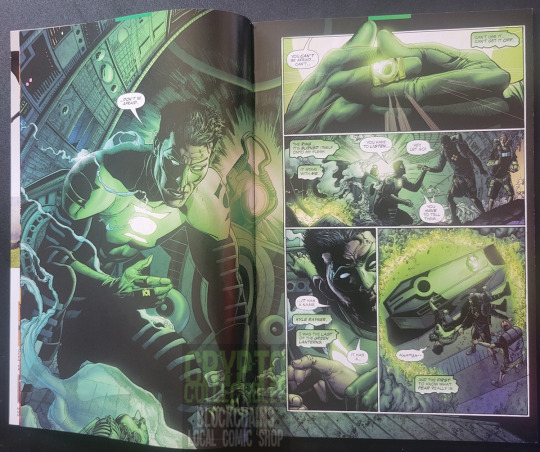
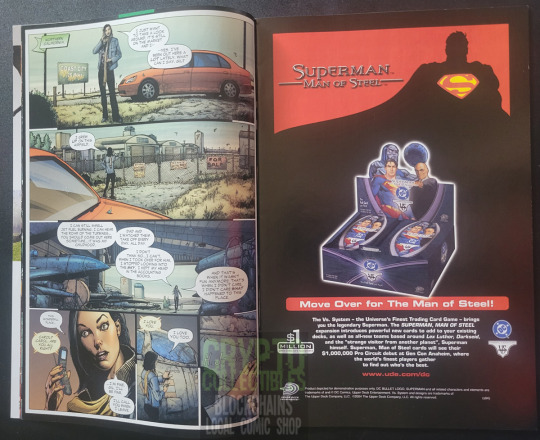
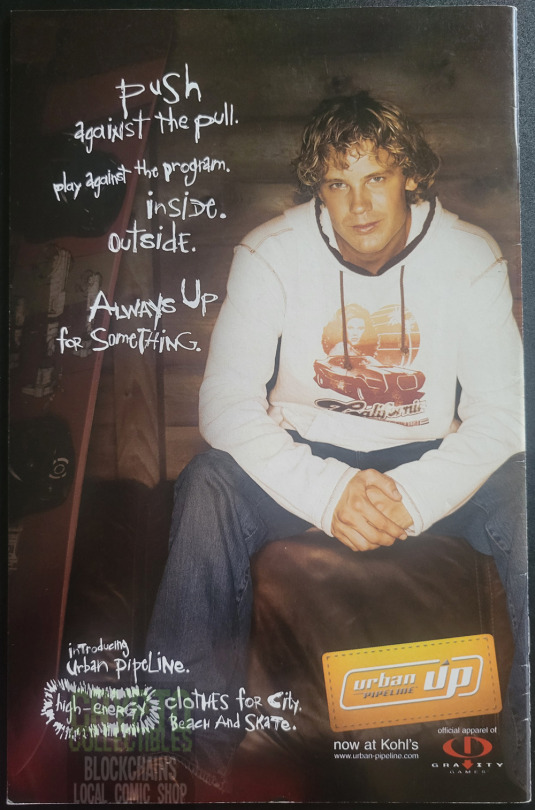

Green Lantern Rebirth #1 & 2 (2004-2005) by DC Comics
Written by Geoff Johns, drawn by Ethan Van Sciver.
#Green Lantern#Green Lantern Rebirth#DC Comics#Geoff Johns#Ethan Van Sciver#Etsy#Vintage Comics#Comic Books#Comics#2004#2005#Prentis Rollins#Hal Jordan#Guy Gardner#Coast City#Kilowog#JLA#Kyle Rayner#John Stewart#Spectre
2 notes
·
View notes
Text
the two major things to look at for people wanting to decipher whether or not a drawing of a blonde white woman wearing a supergirl costume is kara zor el are 1.) the year the issue was written, and 2.) the costume itself.
TIME: if you're reading a comic from the years 1986 to 2003: THAT IS NOT KARA. kara did not just simply DIE during crisis on infinite earths, she was ERASED FROM EXISTENCE. in that time period there were two main supergirls that filled her place: MATRIX (mae kent) and LINDA DANVERS. there are certain instances where kara does appear in either a main universe or elseworlds comic from that time, but in each instance it is exceedingly clear which supergirl is being used.
so, if you stumble across a supergirl while reading something that was written between the years 1986 and 2003, that supergirl is either MATRIX or LINDA.
COSTUME: if you're reading a comic and you see someone wearing the classic, barebones supergirl costume: THAT IS (probably) NOT KARA. kara has only worn the classic supergirl costume a handful of times, and each time it is clear that that supergirl is kara and not mae or linda.
these instances are: any coloring error from a silver age comic that mistakenly makes it so kara's wearing a red skirt instead of her original blue dress, helen slater in the 1984 supergirl film, melissa benoist in cw supergirl, and supergirl rebirth, which was the first time kara wore the classic suit for an extended period of time in a main universe comic.

OTHER THAN THESE SPECIFIC INSTANCES, if you see a supergirl that is wearing the classic costume, it is either matrix or linda or... both? idk I haven't read supergirl (1996), but the important thing to take away is that THIS:

is not kara! pre crisis kara wore a similar suit before she died, but it is still very distinguishable from the classic costume. here's pre crisis kara on the left and matrix on the right:

now, if you're reading a comic and see a supergirl wearing THIS costume:

this is LINDA DANVERS. kara only wears this costume in superman: the animated series, so unless you are watching that (or reading a comic set in that universe), know that this is LINDA and not KARA.
TO SUMMARIZE:
are you reading a comic written between the years 1986 and 2003? if yes: THAT'S NOT KARA.
is that supergirl wearing either the classic costume or white crop top and blue mini skirt? if yes: THAT'S NOT* KARA.
*unless you're watching supergirl (1984), STAS, cw supergirl, or reading a modern supergirl comic. in which case: it IS kara.
in 2004 kara was reintroduced back into main continuity, so from 2004 to NOW every supergirl you see is, more likely than not, KARA:
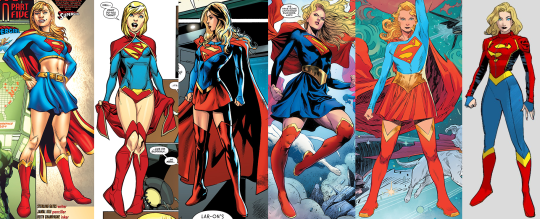
thank you for your time :)
#supergirl#superfam#kara zor el#mae kent#linda danvers#matrix supergirl#inspired by nothing at all!#with regards to the classic suit:#it's obv easier to figure out who's who between kara and linda/mae if you can differentiate between older and newer comic art
219 notes
·
View notes
Text
A (Negative) Analysis of Tom Taylor's Nightwing Run - Who is Dick Grayson?
Introduction Who is Dick Grayson? What Went Wrong? Dick's Characterization What Went Wrong? Barbara Gordon What Went Wrong? Bludhaven (Part 1, Part 2) What Went Wrong? Melinda Lin Grayson What Went Wrong? Bea Bennett What Went Wrong? Villains Conclusion Bibliography
When asked to describe Dick Grayson’s character, many will say he is good. He is Bruce Wayne’s light, the person he could have been had someone offered Bruce understanding and guidance after his trauma. Dick is a leader. A big brother. A mentor. He is someone people can look up to, someone others can trust. He is “The Heart of the DCU.”
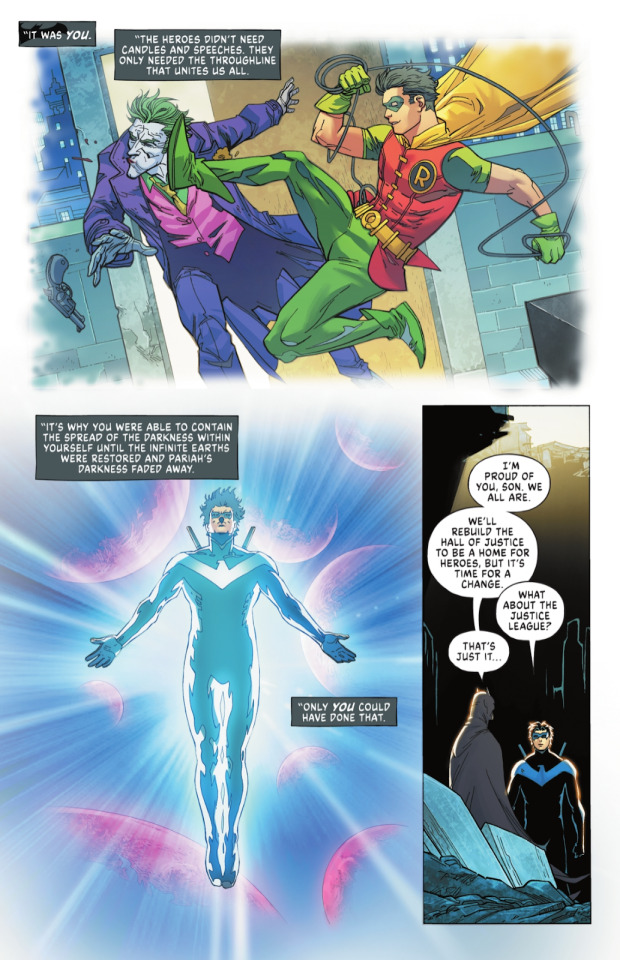
(Williamson, Joshua, writer. Sampere, Daniel; Herbert, Jack; Camuncoli, Giuseppe; Sandoval, Rafa, illustrators. Dawn of the DCU. Dark Crisis on Infinite Earth no. 7, e-book ed. DC Comics, 2022. pp. 28)
Characters, much like real people, are more than just a trait. Jason Todd is more than “angry.” Bruce Wayne is more than just “brooding.” Tim Drake is more than just “smart.” Characters are multidimensional. They have multiple facets, some of which may contradict one another because characters, just like people, are not created out of mathematical equations where two plus two always equals four. Humans are emotional. Their being is informed by past experiences, biology, culture. The intricate combination of these vastly different factors leads to inconsistency in rationality that may not always be logical. Dick being “good” does not mean that Dick can’t be angry, that he can’t make mistakes, or that he can’t lash out or be unreasonable, especially when stressed. Dick being “good” does not mean he can’t brood, does not mean he can’t be suspicious, nor does it mean he will always like everyone. Dick being “good” does not mean he can’t be his own worst enemy, that he can’t be calculative and strategic, that he always needs to be upbeat, or that he can’t be the most intelligent person in the room.
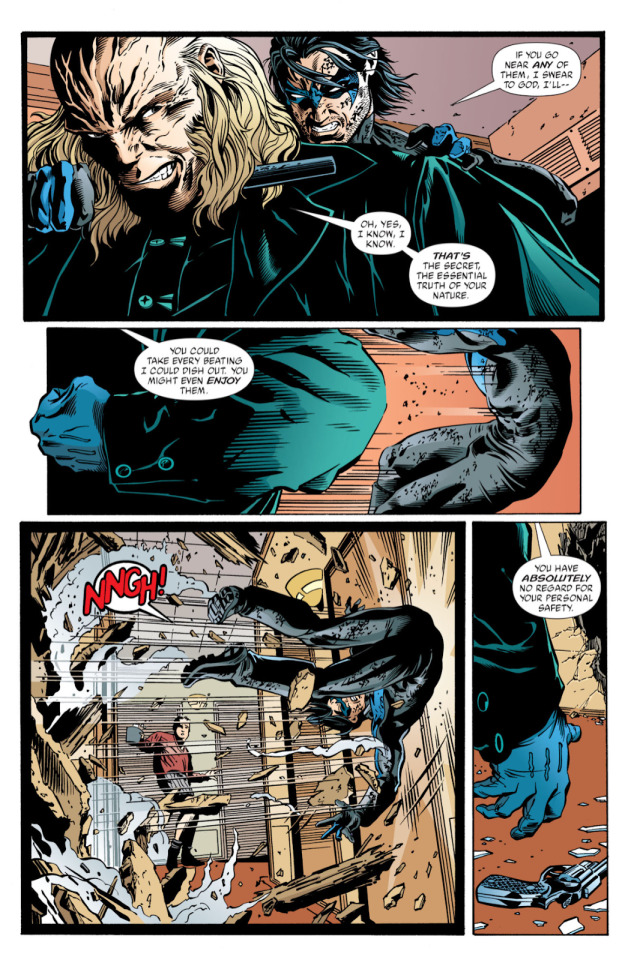
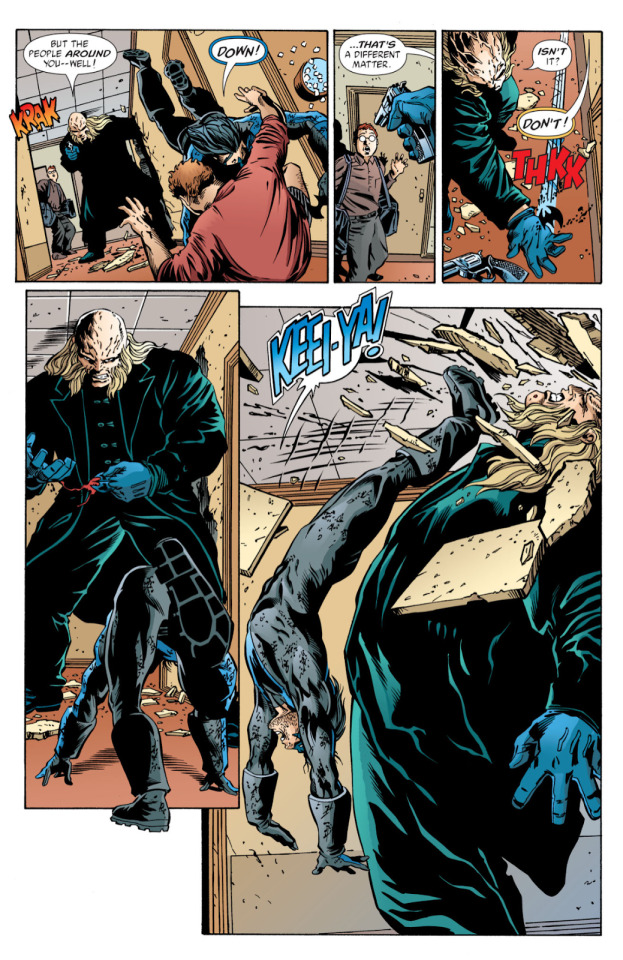
(Grayson, Devin, writer. Zircher, Patch, illustrator. Slow Burn. Nightwing no 93, e-book ed. DC Comics, 2004. pp. 10-11)
Sam Humphries also demonstrated this during his brilliant story, The Untouchable. There, Dick’s relentless determination to save people from the Judge’s machinations grows so intense that it becomes self-destructive. The story demonstrates how Dick’s “goodness” comes from a form of toxic perfectionism that has been with him since he was a child — a perfectionism born of a low self-worth that eats at him from the inside out
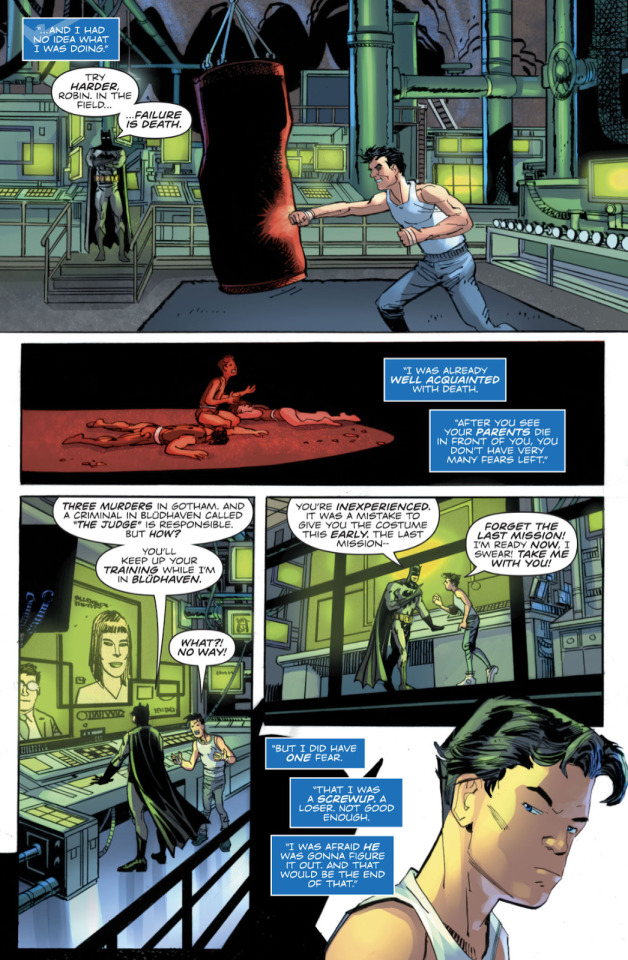
(Humphries, Sam, writer. Janson, Klaus; Campbell, Jamal, illustrators. Ruthless. Nightwing: Rebirth no. 37, e-book ed. DC Comics, 2018. pp. 08)
Even the 2003 animated series Teen Titans understood that in trying to catch the bad guy — almost always Slade Wilson in the case of that show — Dick could sometimes go too far.
Dick’s goodness causes him to see himself as a danger to not just his loved ones, but everyone who stands near him. He carries the world on his shoulders, taking the blame for every tragedy and seeing every death as a personal failure. When pushed to its worst, Dick’s goodness becomes an obsession which pushes others away, leading to isolation as Dick’s entire existence narrows down to accomplishing one specific goal.
It is this reductive characterization of Dick – the idea that his one defining trait is that he is “good” – that leads many to misunderstand the appeal of his character. As I mentioned above, characters are multi-facet, and Dick is no exception. However, the ways in which Dick is multi-facet are very different from the ways in which most characters are multi-facet.
Please do not mistake what I am about to say by claiming these other characters are not complex. Or even that some of them might not subvert popular tropes. What I mean saying is that Dick’s complexity is demonstrated differently than what I believe most people are accustomed to.
For example, everyone knows Bruce Wayne keeps his feelings locked up inside. He compartmentalizes his emotions and his trauma in order to solve the puzzle put ahead of him. But everyone – characters and readers alike – understands Bruce is doing this. Everyone can tell that he is hiding something from others and keeping them at a distance. The reader is always aware of how Bruce’s trauma informs his actions, his interactions, and his thought process.
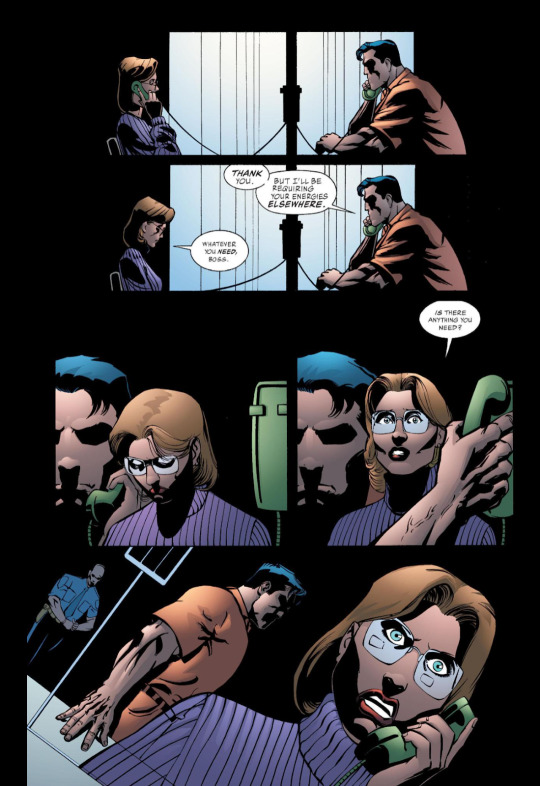
(Grayson, Devin; Barr, Mike W., writers. Davis, Alan; Robinson, Roger, illustrator. Procedure. Batman: Gotham Knights no. 25, e-book ed. DC Comics, 2002. pp. 20)
Take, for instance, Part One of Murderer/Fugitive. Although a major source of tension from the story surrounds the question of Bruce’s innocence, there’s never any question in the minds of the reader and the character that Bruce is hiding something. Tim Drake questions whether Bruce truly did kill Vesper Child and is hiding his motive, while Dick is certain of Bruce’s innocence and instead believes Bruce is hiding his alibi or the clues that would help them find the real murderer. Barbara Gordon, for her part, wavers between the two, but like Tim, Dick, and the reader, she is certain of one thing: Bruce Wayne is hiding something from her, from them… From us.
Similarly, Jason Todd’s anger comes from a place of hurt and a place of love, from insecurities and a need to prove himself. But like Bruce, all of that is clear to see. His anger and his hurt are simple to understand. Please, do not mistake this for me claiming that Jason is not a complex character — instead, I’m stating that his temperament, his trauma, and his actions are so interlinked that they are clear for the reader to see. His character, while rich, is more accessible. It does not take a lot of effort to know that Jason is angry because of what was done to him. It is easy to see that he is hurt because he equates Bruce’s love to the Joker’s death, and therefore sees Bruce’s failure to avenge him “proof” that Bruce does not love him as a son.
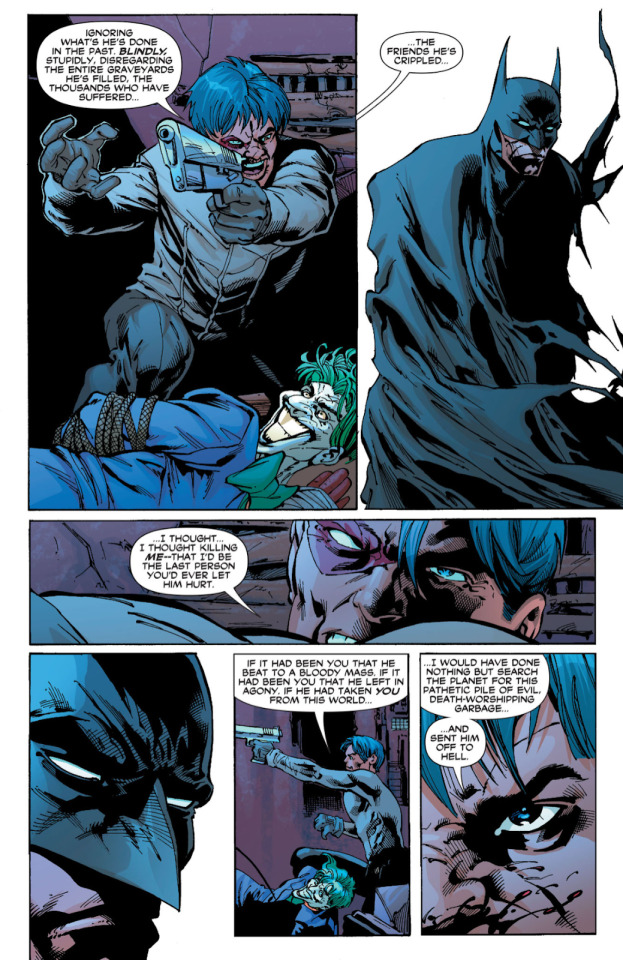
(Winick, Judd, writer. Battle, Eric, illustrator. All They Do is Watch Us Kill: Part 3: It Only Hurts When I Laugh. Batman no. 650, e-book ed. DC Comics, 2006. pp. 13) Dick, on the other hand, does not wear his emotions, his motivations, or his goals on his sleeve. Dick keeps his secrets not by constructing an impenetrable wall like Bruce, but through misdirection. This is why those who are unfamiliar with Dick misinterpret him so much. They take what is on the surface at face value because they do not have the character history to serve as context to understand what lies beneath As a Dick Grayson fan (From this moment forward will be referred to as Dick Grayson Fan A) said “good Dick writers teach readers how to read him and bad Dick writers just have that surface level interpretation.” (I was actually talking to her about this idea and how I’m presenting it in this essay. The example I gave was one she suggested after I asked if she could think of good moments that exemplified this idea.)
As an example, we can look at this moment from Grayson, in which Dick sucks a lollipop while receiving a mission assignment. Someone who is not familiar with Dick and is looking at Dick and Helena’s interaction might be easily fooled into thinking that Dick is the pretty, strong, but annoyingly childish and slightly dumb male character who contrasts the serious, intelligent, and highly competent woman. The characters’ expressions, actions, and the onomatopoeias are certainly leaning into that familiar trope.
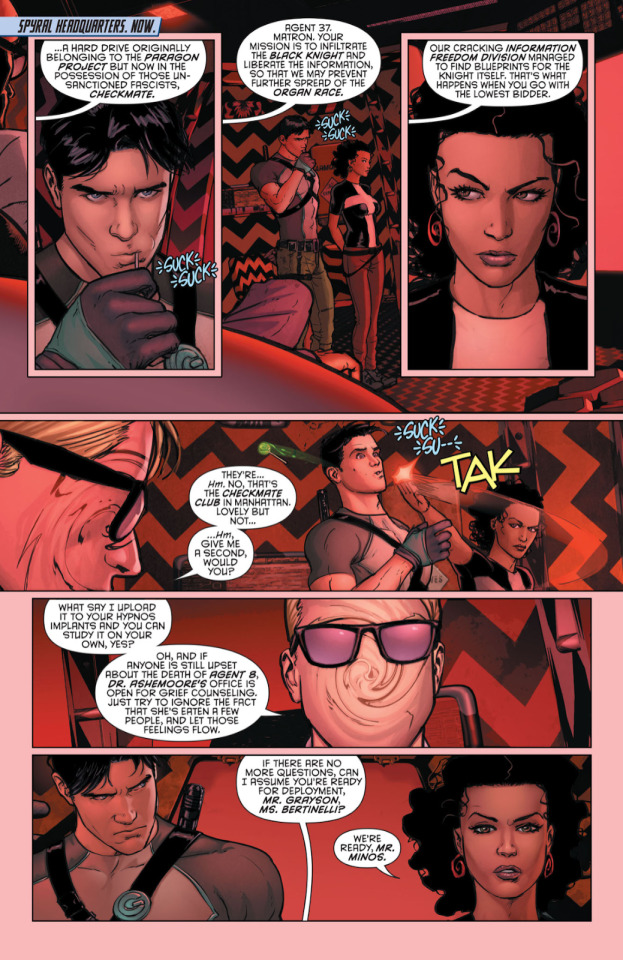
(King, Tom; Seeley, Tim, writers. Janin, Mikel, illustrator. The Raid. Grayson no. 04, e-book ed. DC Comics, 2014. pp. 02) However, Dick Grayson fans know that when it comes to the mission, Dick is as serious as Batman himself. Highly intelligent, Dick is considered to by many the world’s second greatest detective (there are many instances in canon when he is referred to as such), making him more than just a pretty face who knows how to fight (It should be noted that in this tweet, writer Tom King also ranks Dick as the second best fighter in the Bat Family). Furthermore, context matters. Dick is deep undercover throughout the duration of Grayson, and this scene is set shortly after the death of one of the agents of the organization Dick has infiltrated. In other words, Dick is in a highly stressful situation without allies to provide him with back-up or emotional support.
His posturing in this scene, then, can be seen as an attempt to misguide and misdirect. He does not wish to let those around him – people he is not sure yet if he can trust – know the full extent of his capabilities or perceive any potential weaknesses in his value of human life. Positioning himself as the annoying and childish pretty boy who does not pay much attention to serious matters is a strategic choice that his fans readily pick up on.
That is not to say that Dick’s smiles are all lies. Rather, Dick’s upbeat nature is a natural aspect of his personality that he will exaggerate depending on the setting in order to keep his privacy. He is a natural performer, a showman, and so he utilizes misdirection to his advantage.
A classic example of Dick’s misdirection and how he is misinterpreted by others is how some would characterize him as an “attention seeker.” However, the term “attention seeker” has negative connotations as it implies someone who seeks the spotlight at the expense of others.
That is the opposite of who Dick is. But that’s not Dick is. As a mentor, a leader, and an older brother, Dick will often invite others to join the conversation. He pays attention to what they say, he strategizes based on their needs.
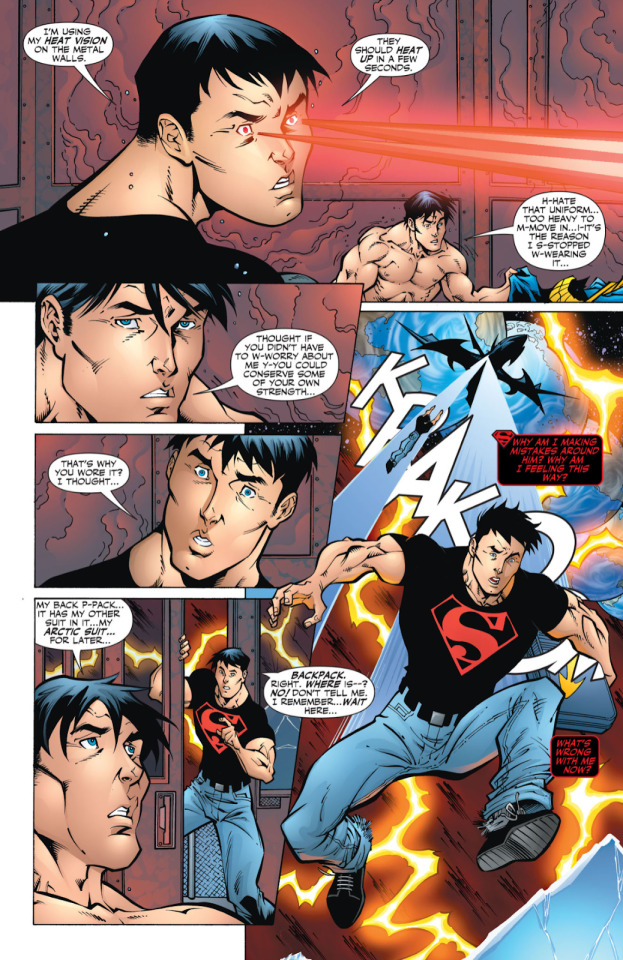
(Johns, Geoff; Wolfman, Marv, writers. Nauck, Todd, illustrator. The Brave and the Bold. Teen Titans no. 33, e-book ed. DC Comics, 2006. pp. 15)
Simply put, Dick is incredibly empathetic and always in tune with those around him. This is why he works so well as both a Bat and a Titan, and why his personality in each team is so distinct. As a Bat, Dick is often portrayed as cheerful, his bad puns are meant to cut the tension, the is the shoulder for his family to cry one; as a Titan, Dick is a leader, he is a strategist, he demands others take things seriously and will not tolerate slacking off, he is trying to instill good work ethics and ensure that the team dynamic stays in top shape.
As JL Bell writes in their essay Success in Stasis: Dick Grayson’s Thirty Years as a Boy Wonder for the book Dick Grayson, Boy Wonder: Scholars and Creators on 75 years of Robin, Nightwing, and Batman explains, “in contrast to how Robin behaved with Batman. [Dick] is usually [the Titans’] serious leader.” (Bells, JL “Success in Stasis: Dick Grayson’s Thirty Years as a Boy Wonder.”Dick Grayson, Boy Wonder: Scholars and Creators on 75 years of Robin, Nightwing, and Batman edited by Kristen L. Geaman, McFarland & Company, Inc., Publishers, 2015, pp. 22)
That is because Dick knows that when he is with his family, he needs to play one role, and when he is with his friends, he needs to play another. The Bats have their strengths, so Dick adjusts himself to play up on those strengths while also making up for its weakness. Same thing with the Titans.
Mark Waid perfectly exemplifies Dick’s adaptability when portraying him in his World’s Finest (2022) and World’s Finest: Teen Titans (2023). There, Dick brings levity to his work with Batman and Superman, keeping an upbeat attitude while still taking the job seriously.
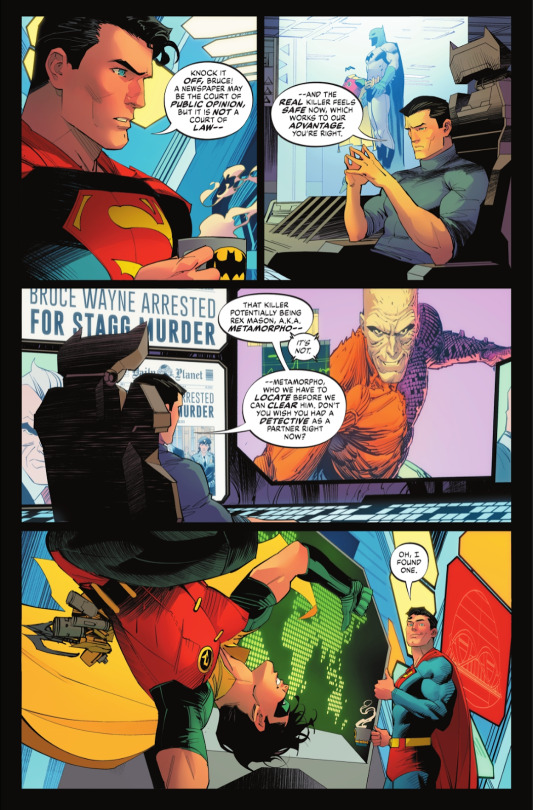
(Waid, Mark, writer. Mora, Dan, illustrator. Manhunt. Batman/Superman: World’s Finest no. 14, e-book ed. DC Comics, 2023. pp. 07)
Yet, when he is with the Titans and feels the weight of leadership on his shoulders, he is more serious, being the one to get the Titans to focus on their objective, getting them to look at the big picture, while also making the most of their abilities as individuals and as a team.
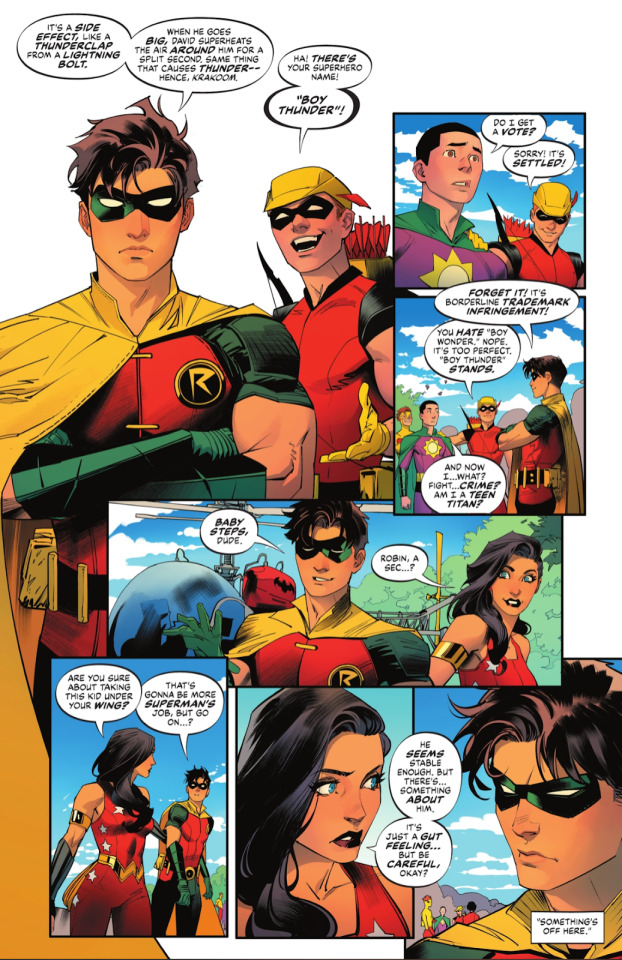
(Waid, Mark, writer. Mora, Dan, illustrator. Team Spirit. Batman/Superman: World’s Finest no. 08, e-book ed. DC Comics, 2022. pp. 05)
So yes, Dick is a performer, a showman, but he is not “attention seeking.” In fact, his use of misdirection illustrates that Dick is a very private person. And how could he not be? While it is true that Dick grew up in the circus, after his parents’ death, he went to live with Bruce, and in doing so, was put into an intense amount of public scrutiny. The murders of John and Mary Grayson happened on a literal stage with dozens of people watching. As a result, Dick’s very private tragedy became a spectacle.
After the death of Dick’s parents, Dick isn’t allowed to disappear into anonymity. He is not afforded privacy to grieve. He is taken in by Bruce Wayne, Gotham’s most famous playboy, billionaire, philanthropic who is also a bit of a selfish airhead (at least, that is how the public perceives him), and as a result, Dick is subjected to an immense amount of public scrutiny, not just from the media, but also from Gotham’s elites, and even his peers at school. Not only that, as Robin, the Boy Wonder and the first ever sidekick, Dick also is put on the spotlight while also being aware of the necessity of keeping secrets.
As a result of having his tragedy broadcasted and having a new mission that requires secrecy, Dick becomes a very private person. He is not an open book; instead, he is meticulous about what he shares and he prevents people from looking at what is not of their business by using his showmanship.
Furthermore, Dick’s role as a performer who, as Joshua R Pangborn describes in his essay about the Robin costume, “experiences […] the full spectrum of emotions, each and every night, for the catharsis of others,” transforms him into a literal vehicle for emotional catharsis and empathy. (Pangborn, Joshua R “Fashioning Himself a Hero: Robin’s Costume and its Role in Shaping His Identity”Dick Grayson, Boy Wonder: Scholars and Creators on 75 years of Robin, Nightwing, and Batman edited by Kristen L. Geaman, McFarland & Company, Inc., Publishers, 2015, pp. 42) In their essay, Bell argues that while Bruce Wayne embodied “the mid-century ideal of the American male,” who is always “in control of his feelings, not letting them overcome his judgment nor displaying them broadly,” Dick Grayson “can express deep emotions, not only his own but Bruce’s.” As such, Dick often acts as a sounding board for his family, friends, team, and romantic partners. As a performer, Dick embodies whatever persona is necessary to create a safe environment where others can process their emotions and achieve catharsis. (Bells, JL “Success in Stasis: Dick Grayson’s Thirty Years as a Boy Wonder.”Dick Grayson, Boy Wonder: Scholars and Creators on 75 years of Robin, Nightwing, and Batman edited by Kristen L. Geaman, McFarland & Company, Inc., Publishers, 2015, pp. 12)
Dick's performance, then, comes not just from a desire for privacy but also from a deep place of empathy. It comes from a desire to help others work through their own stories. This is why he can step into other's narratives without overshadowing them. In fact, he’ll often elevate those characters by complimenting them and creating the circumstances needed for them to shine. As a performer, Dick is naturally adaptable and always willing to fill the role necessary to create the space required for others to work through their emotional needs.
But, as with everything, Dick’s performance is also a result of his destructive perfectionism. Dick equates “good” to “perfect.” He believes that he can only be wanted by Bruce if he is the perfect Robin, he can only be wanted by his friends if he is the perfect leader, he can only be wanted by his siblings if he is the perfect older brother, he can only be wanted by his partners if he is the perfect boyfriend. As Humphries’s The Untouchable demonstrates, because Dick was raised in an environment where failure could be fatal, he internalized these stakes to every aspect of his life.
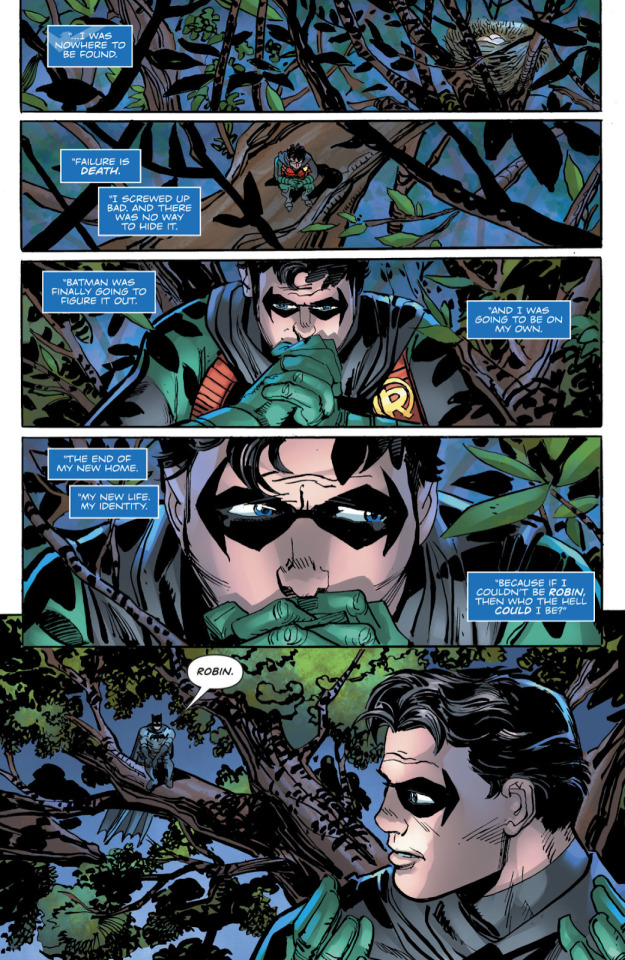
(Humphries, Sam, writer. Janson, Klaus; Campbell, Jamal, illustrators. Ruthless. Nightwing: Rebirth no. 37, e-book ed. DC Comics, 2018.pp 20
And it doesn’t help that all of the people in Dick’s life do prove that assertion right. Everyone holds “the Heart of the DCU” to an impossible standard that, when Dick fails to live up to it, he is crucified and punished for it. If he tries to be perfect, he's told off for being the Golden Boy, but if he fails to be the Golden Boy, then he is told off because he let people down when they were relying on him. Ironically, this is done by characters in-universe real-world fans. As Dick Grayson Fan A pointed out in a discussion about depiction of Batman Family members killing their antagonists, “there's always this pressure to have Dick ~fall from grace~ and I do lowkey resent that. Dick should be allowed to be good, not punished for it.”
This creates an environment where Dick constantly needs to maintain perfection in order to be in everyone’s good graces. Failure is not met with understanding and comfort, but with punishment. No one expects him to fail, no one likes when he fails, no one forgives him when he fails. That also means that Dick doesn’t feel safe opening up about his insecurities because to do so would mean “proving” he cannot stay on the pedestal he’s been put on. And so, he is forced to perform the role of a “perfect good guy” by using misdirection so people won’t abandon him for being human (this was said during a very interesting discussion and addressed both canon and fanfic writers. There’s a lot that can be said about Dick’s parentification and how that is viewed in the context of fandom. This is not the essay for it, and, to be perfectly honest, I’m not entirely sure I’m the best person to open said discussion).
Taylor does not portray Dick as someone with this many layers. Taylor’s Dick is perfect simply because he is good. He is the perfect friend, who is always happy to support others. He is Barbara Gordon’s perfect boyfriend. Dick is the perfect older brother, the perfect son, perfect model citizen.
But by equating being “good” with being “perfect” without exploring the negative consequences that come from such pressures, Taylor robs Dick of the emotions that humanize him. In Taylor’s run, a good person will not be angry at their friends, will not be frustrated with their siblings, will never disagree with their romantic partner. This strips Dick of all of his nuances, and instead reduces him to a non-descriptive “everyman hero” with a limited emotional range whose only narrative purpose is to serve as a blank canvas for readers to project themselves into.
Simply put, Taylor is uninterested in writing Dick as a character because he does not see value in Dick for who he is. Nightwing #105, which removes Dick from its story in order to allow its readers to “be Nightwing” illustrates how Taylor and DC at large only value Dick his connections, not for who he is.
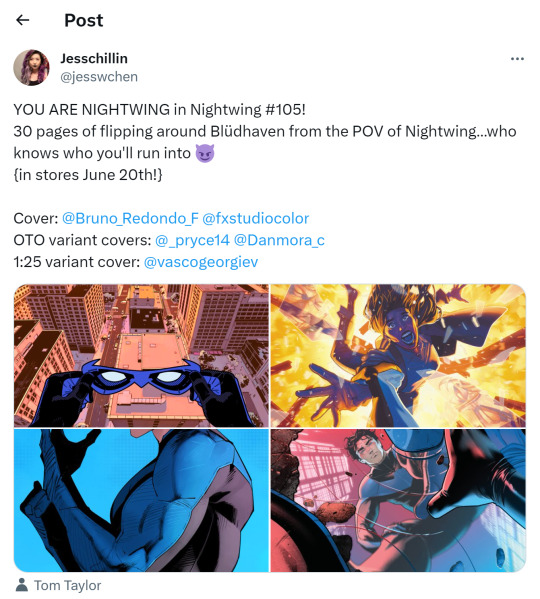
(Chen, Jess [jesswchen]. “Tweet Message.” 18 March 2023, https://twitter.com/jesswchen/status/1636971185782259716?s=20.)
Be Dick, and you can be good friends with Superman! You can be Batman’s son! You can be Batgirl’s boyfriend! Robin’s big brother! Flash’s best friend!
As a Dick Grayson fan, this feels insulting. I’m not saying Dick needs to be anyone’s favorite character, or that anyone even needs to like him. I’m not interested in dictating anyone’s taste. But to someone who loves Dick Grayson, it is insulting to think that those responsible for his stories fail to see his value. To Taylor, the person who, as the writer for both Nightwing and Titans, has the most control over Dick’s portrayal, Dick is nothing but a tool that will soon wear off its use.
In treating Dick as such, Taylor and DC send a clear message to those of who love Dick, and that message is that the things that make Dick special, the things that made us love him, do not matter.
For his near century long existence, Dick served as a stand in for those who feel othered in society. While I do not have the time to go into a gender studies and queer reading of Dick, it is notable that his character often spoke to many people who felt different. As Mary Borsellino’s 2006 essay “A lot like Robin if you close your eyes” Displacement of meaning in the Post-Modern Age explains:
The things which a Robin-like figure can contain, but which are cut off from being embodied by Robin himself, lose none of their importance simply because they are rejected by a restrictive, corporate-controlled status quo […] It's worth inspecting what was excised from Robin, and charting where these elements instead found articulation: in those from lower socioeconomic backgrounds; non-White people; young single parents; and HIV positive people. And, especially, girls and women (Borsellino, Mary “‘A lot like Robin if you close your eyes.’ Displacement of meaning in the Post-Modern Age, 2006)
While Borsellio’s essay focuses on the Robin mantle, as the creator of said mantle, such assertions can also be applied to Dick. In fact, Bell concurs with the idea that those who were othered have always took a preference to Dick when stating that “Robin’s status as the littlest guy in the fight increases the character’s appeal for some children, especially the ‘youngest and weakest.’” In other words, it is crucial to Dick’s character that he is not an “everyman hero.” He is not the hero of or beloved by the average individual, but rather by those who were ostracized by society.
Taylor’s writing exemplifies the “restrictive, corporate-controlled status quo” imposed by DC that Borsellino speaks of. His characterization is the manufactured image that removes Dick’s “socially deviant/rejected” qualities his fans loved about him so that he can be palatable to a more mainstream audience. (Bells, JL “Success in Stasis: Dick Grayson’s Thirty Years as a Boy Wonder.”Dick Grayson, Boy Wonder: Scholars and Creators on 75 years of Robin, Nightwing, and Batman edited by Kristen L. Geaman, McFarland & Company, Inc., Publishers, 2015, pp. 11)
This, of course, is not necessarily new. As Mason Downey argues in their 2015 essay In Defense of Dick Grayson: Objectification, Sexuality, and Subtext, DC has often struggled between leaning into the audience Dick has and wanting to erase any “othering” elements from his character. As they point out:
The more sexual and idealized Dick was allowed to become, the more attention he got from female and queer fans, the more the industry had to work to combat the past anxieties revolving around the character. This resulted in more and more heteronormative romances for Dick on the page. We can’t grant Wertham’s fears any legitimacy, we can’t make these stories “for girls.” Writers did so in a few ways, some obvious, some less so. On the page, we had Dick’s deflection of female sexuality that he was not in control of, and we had a level of emotional posturing with relationships he was in control of. We had moments where we saw him manipulating with or being manipulated by sex. There were editorial pushes to lean into Dick’s popularity with women and queer men coupled with the simultaneous desire to not acknowledge or grant legitimacy to the fanbase he found in those demographics. This translated to more sexualized poses. More pin-up style spreads. Multiple bait-and-switch wedding, marriage, and relationship teases which turned out to be fakeouts or got written out. Long strings of female side characters were introduced exclusively to be love interests. Off the page, we had more concrete examples. We saw a lack of merchandise and lack of representation of him in other forms of media. There was a pervasive hesitancy in broaching his existence outside of the spheres of already established fans. For example, Nolan’s The Dark Knight Rises featured Joseph Gordon-Levitt playing a character literally named Robin, who was invented for the film franchise rather than allowing Dick himself to exist in that cinematic universe. Dick Grayson is a character built upon one repeated mantra aimed at what eventually become two of his largest demographics, “Remember, this is not for you.”
(Downey, Mason “In Defense of Dick Grayson: Objectification, Sexuality, and Subtext” Women Write About Comics. December 2015)
What makes Taylor’s run unique is that in trying to have Dick tackle social issues such as homelessness and in trying to create a class commentary, Taylor attempts to create a progressive, albeit simplistic, veneer while erasing the important and “other-ing” aspects of Dick’s character that was so beloved by his fans.
This, I believe, is one of the many explanations why many of those who praise Taylor run claim that this is the first Nightwing run they ever enjoyed, while many (though admittedly, not all) those who have been longtime Dick Grayson fans feel betrayed and frustrated by the way their beloved character is being handled. Dick is currently being appropriated into a more mainstream, palatable hero. He is being taken from those who loved him and being scrubbed clean to be suitable for an audience who could not appreciate him for what he was, only for how his connections could give them a wish fulfillment fantasy. As another Dick Grayson fan expressed:
I see no heart in [Taylor’s] work, only soulless marketing. He sells himself as something good and work on his perfect public image and everyone who disagrees is wrong and it gets on my nerves like nothing else. […] I wouldn't be as salt[y] if Taylor was genuinely trying to writing something good. I don't have the heart to [be salty] at someone working with passion, even if I don't like it.
(Henceforth referred to as Dick Grayson Fan B... This was actually said during a discussion in which we expressed how we wish we could be as excited about Taylor’s run as many others are.)
315 notes
·
View notes
Text
ULTIMATE SUPERGIRL READING GUIDE
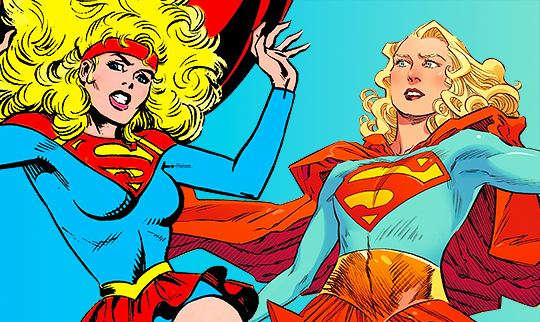
since i've been asked a few times in the past for various reading guides for kara, i thought i'd compile them all into one post for the sake of convenience!
this guide has reading orders for supergirl comics in PRE-CRISIS (1959-1985), POST-CRISIS (2004-2011), NEW 52 (2011-2016), REBIRTH (2016-2021), and INFINITE FRONTIER (2021-present).
if you have any questions at all don't be afraid to shoot me an ask!
for each section bolded comics are required, italicized comics are recommended, and everything else is optional!

[PRE-CRISIS]
ORIGIN AND MIDVALE ERA (NOTE: you'll have to flip to the back of each issue to get to kara's section!) action comics (1938) #252, 258, 267, 276, 278-282, 285, 295, 309-310, 313, 317
STANHOPE COLLEGE action comics (1938) #318, 366-368, 372, 374 world’s finest (1941) #169 adventure comics (1938) #381, 386, 391, 395, 397
K-SFTV REPORTER — SAN FRANCISCO adventure comics (1938) #406-407, 410-415, 419-424
VANDYRE UNIVERSITY supergirl (1974) #1-10
STUDENT ADVISOR — FLORIDA (NOTE: every member of the superfamily has a story in the superman family (1974), so you'll have to flip through to find kara's section!) the superman family (1974) #165, 168, 171, 174, 177, 180, 182 justice league of america (1960) #132-134 the superman family #183, 184-186, 187-189, 191-193, 194, 196-198, 199, 200, 201-202, 203, 204-205, 206-207
ACTRESS — NEW YORK the superman family (1974) 208-210, 211-214, 215-216, 217, 218 superman (1939) #373 (second story titled “an eye (and ear) on the world!”) detective comics (1937) #508-510 the superman family #219-222
THE GREAT DARKNESS SAGA (i recommend this storyline in it's entirety, but kara only appears in the last issue!) legion of superheroes (1980) #290-294
LAKE SHORE UNIVERSITY supergirl (1982) #1-12 (cw: nazi imagery in the brief interlude in #12) supergirl (1982) #13-15 (cw: antisemitism, nazi imagery, depictions of the holocaust.) supergirl (1982) #16-23
LAST APPEARANCES AND DEATH legion of super-heroes (1980) #300-303 dc comics presents (1978) #28 tales of the legion of super-heroes (1984) #314-315 crisis on infinite earths (1985) #4-7
BONUS POST-COIE APPEARANCES christmas with the super-heroes (1988) #2 (last story titled “should auld acquaintance be forgot”) supergirl (1996) #49, 75-80 solo (2004) #1 (third story titled “young love”) convergence: adventures of superman (2015) #1-2

[POST-CRISIS]
ORIGIN superman/batman (2003) #8-13 (or you can watch superman/batman: apocalypse (2010) instead which I recommend! the art is a lot more tasteful and it's a very faithful adaptation of the comic so you won’t be missing out on anything.)
KARA WITH THE LEGION OF SUPER-HEROES supergirl and the legion of super-heroes (2006) #16-36
LOEB AND KELLY HELL ERA supergirl (2005) #1-5, 9-10, 19 (you don’t have to read any of this since it gets retconned anyway, but if you’re interested in kara’s early characterization, the beginnings of her friendship with cassie sandsmark, or her difficulty fitting in on earth then you’re welcome to read what i’ve provided.)
KELLEY PUCKETT ERA Amazons Attack! teen titans (2003) #47-48 amazons attack! (2007) #3 supergirl (2005) #20 amazons attack! (2007) #4 teen titans (2003) #49
supergirl (2005) #21-22 teen titans (2003) #50, 51-55 supergirl (2005) #25-33
Superman: Brainiac action comics (1938) #866-870
GATES AND IGLE HEAVEN ERA supergirl (2005) #34
New Krypton (new krypton is one of my favorite events and i recommend it in its entirety, but for the sake of brevity I’ll only be listing the issues relevant to kara.) superman: new krypton special #1 superman (1939) #681 adventure comics special featuring guardian #1 action comics (1938) #871 supergirl (2005) #35 superman (1939) #682 action comics (1938) #872 supergirl (2005) #36 superman (1939) #683 action comics (1938) #873
teen titans (2003) #66 supergirl (2005) #37-42
Friends and Fugitives superman: secret Files 2009 #1 supergirl (2005) #43 action comics (1938) #881 supergirl (2005) #45 action comics (1938) #882 supergirl (2005) #46-47
supergirl (2005) annual 1, #48-50
Last Stand of New Krypton adventure comics (2009) #8 superman: last stand of new krypton #1 supergirl (2005) #51 superman (1938) #698 adventure comics (2009) #9 superman: last stand of new krypton #2 adventure comics (2009) #10 supergirl (2005) #52 superman (1938) #699 superman: last stand of new krypton #3 superman: war of the supermen (2010) #0, 1-4
supergirl (2005) #53-57, annual 2, 58-59
END OF SUPERGIRL VOL 5 supergirl (2005) #60-64 supergirl (2005) #65-67

[THE NEW 52]
ORIGIN and SUPERGIRL VS THE WORLDKILLERS supergirl (2011) #1-7
SUPERGIRL and SILVER BANSHEE supergirl (2011) #8-11
SUPERGIRL and SUPERBOY superboy (2011) #6
SANCTUARY supergirl (2011) #12, 0, 13
H’EL ON EARTH superman (2011) #13 supergirl (2011) #14 superman (2011) #14 superboy (2011) #15 supergirl (2011) #15 superboy (2011) #16 superboy (2011) Annual #1 supergirl (2011) #16 superman (2011) #16 superboy (2011) #17 supergirl (2011) #17 superman (2011) #17
SUPERGIRL and POWERGIRL supergirl (2011) #18-20
CYBORG SUPERMAN supergirl (2011) #21-23 action comics (2011) #23.1 supergirl (2011) #24
KRYPTON RETURNS action comics (2011) annual #2 superboy (2011) #25 supergirl (2011) #25 superman (2011) #25
SUPERGIRL VS LOBO supergirl (2011) #26-27
RED DAUGHTER OF KRYPTON supergirl (2011) #28-29 red lanterns (2011) #28-29 supergirl (2011) #30 red lanterns (2011) #30 supergirl (2011) #31 red lanterns (2011) #31-32 supergirl (2011) #32-33
SUPERMAN: DOOMED (this is a whole storyline but I'll only be listing the issues that kara appears in!) superman/wonder woman (2013) #9 action comics (2011) #33 supergirl (2011) #34 superman: doomed (2014) #2 action comics (2011) #35 supergirl (2011) #35
FUTURES END supergirl: futures end (2014) #1
JUSTICE LEAGUE UNITED justice league united (2014) #1-5 justice league united (2014) annual #1 justice league united (2014) #6-10
CRUCIBLE supergirl (2011) #36-40
FINAL DAYS OF SUPERMAN (kara only appears in the issues i've italicized and bolded, but i put all the relevant issues if you wanted to read the full storyline!) superman (2011) #51 batman/superman (2013) #31 action comics (2011) #51 superman/wonder woman (2013) #28 batman/superman (2013) #32 action comics (2011) #52 superman/wonder woman (2013) #29 superman (2011) #52

[REBIRTH]
KARA IN NATIONAL CITY supergirl: rebirth #1
supergirl (2016) #1-8 batgirl (2016) annual 1 supergirl #9-12
supergirl (2016) annual 1supergirl #13-20
world's finest: batwoman and supergirl #1-2
ROGOL ZAAR and THE SINS OF THE CIRCLE the man of steel #1-2, 3-6 supergirl #21-33, #34-36
LEVIATHAN and BATMAN WHO LAUGHS superman: leviathan rising special #1 supergirl #34-36 supergirl (2016) annual 2 supergirl #37-42
HOUSE OF KENT action comics (2016) #1022-1023 action comics (2016) #1024-1028
FUTURE STATE superman of metropolis (2021) #1-2 kara zor el, superwoman (2021) #1-2

[INFINITE FRONTIER]
action comics 2021 annual
WOMAN OF TOMORROW supergirl: woman of tomorrow (2021) #1-8
WORLD'S FINEST batman/superman: world's finest (2022) #2-6, 8, 12
A WORLD WITHOUT CLARK KENT and RED MOON (kara is featured in the back-up story! if you want the full context of this plot i recommend reading the full warworld arc in action comics [action comics #1030-1046, superman: warworld apocalypse #1]!) action comics (2016) #1044-1046, 1047-1049
DAWN OF DC action comics (2016) #1051-1053, 1055-1056 superman (2023) #1-3 power girl special #1 steelworks (2023) #1-3
KNIGHT TERRORS knight terrors: superman (2023) #1-2
DAWN OF DC (continued) action comics: doomsday special (2023) superman (2023) #7 hawkgirl (2023) #4 supergirl special (2023)
NEW WORLDS [this arc starts on action comics #1057—kara doesn't appear in that issue but I recommend reading it for context!] action comics (2016) #1058-1060 action comics 2023 annual
JOURNEY TO FERIMBIA powergirl (2023) #5, 6-7
HOUSE OF BRAINIAC action comics (2016) #1064 superman (2023) #13 action comics (2016) #1065 superman (2023) #14 action comics (2016) #1066 superman (2023) #15
UNIVERSE END action comics (2016) #1070-1081
MISCELLANEOUS RECENT APPEARANCES: superwoman special #1 superman (2023) #21-22
691 notes
·
View notes
Text
Love that the first thing Sinestro does when he sees Hal again is YEET

(Hal your lil smirk???)
The NEXT thing he does is launch into BITCH MODE.

Bitch. MODE.

This mf is crying into his Cheerios because somewhere out there Hal Jordan might not have been called a looser today.
God, Sin, baby, just get the pint of Ben and Jerry's and watch a sad movie, you'll feel better. <3
#green lantern#rebirth 2004#thaal sinestro#hal jordan#sinhal#GOD#the BRAIN WORMS in that man#sinny sweatie i need you to get a cat or something#it worked well for the red guy!
62 notes
·
View notes
Text
USA Today Interview (2024)

For Jonathan Bailey, one of the biggest perks of starring in a massive franchise is getting your very own Lego figure.
The British actor, who plays the swoony prince Fiyero in “Wicked,” is featured in a 945-piece plastic Emerald City set. Although he has yet to procure the toy metropolis for himself, “Christmas is coming and I hope I’ve been a good boy this year,” Bailey says with a grin.
The impish heartthrob has been using Legos to unwind while on a weekslong promotional tour for the blockbuster movie musical, which tells the origin story of the witches of Oz. “Just last night, I managed to (put together) the Atlantic Ocean in this giant Lego globe that I’m currently building,” he delightedly explains.
The fantasy film caps off a monumental year for Bailey, 36, who earned an Emmy nomination for his devastating work in Showtime miniseries “Fellow Travelers,” and spent the summer in Thailand shooting “Jurassic World: Rebirth” (in theaters July 2, 2025) alongside Scarlett Johansson.
“It’s extraordinary the types of roles I’ve been able to play these last two years,” says Bailey, who broke through to U.S. audiences on Netflix phenom “Bridgerton” in 2020. “I’m pinching myself. If I could have gone back and told my younger self that this would be happening, I’d probably do a flip.”
Jonathan Bailey brings 'boyish charm' to 'Wicked' prince Fiyero
Bailey is no stranger to musical theater: At just 8 years old, he played the pint-sized revolutionary Gavroche in “Les Misérables” on London’s West End. And in 2019, he won an Olivier Award for a gender-swapped revival of Stephen Sondheim’s “Company,” singing the mile-a-minute “Getting Married Today.”
But it was a viral audition tape for the musical “The Last Five Years” that caught the attention of “Wicked” director Jon M. Chu. “It felt like the thing I’ve always loved about musicals, where the song is just an extension of the dialogue. It felt like acting,” Chu recalls. “He just has that X factor. There’s such a boyish charm to him that you’re like, ‘That is Fiyero.’”
Like many, Bailey became obsessed with “Wicked” thanks to its Broadway cast album and 2004 Tony Awards performance with Idina Menzel and Kristin Chenoweth. “The lyrics are so fascinating and witty,” Bailey says. “I remember laughing specifically at Glinda singing how this hat is ‘really, uh, sharp, don’t you think?’ I screamed!”
When the contumacious Fiyero arrives at Shiz University from Winkie Country, he instantly enchants the besotted Glinda (Ariana Grande), but slowly finds himself drawn to the green-skinned Elphaba (Cynthia Erivo). He also freely flirts with both his male and female classmates.
“Fiyero is confident and curious and kind enough to invite anyone to Winkie Country,” Bailey says cheekily. But as a gay actor, he’s grateful for the “years and years of progress” that have allowed him to be the leading man in a big-budget movie like “Wicked.”
“There's been many Fiyeros before me, and many members of the LGBT community who have fought for times where someone like me could play these parts,” Bailey says. "This story resonates for so many people because it’s about identity and celebrates our similarities. In playing Fiyero, you realize what an ally he is to someone who’s outside of society. People are incredibly unkind to Elphaba, and he uses his charm and privilege” to help her feel accepted. “It’s really lovely.”
The 'Bridgerton' dreamboat heads to 'Jurassic World' next
“There's been many Fiyeros before me, and many members of the LGBT community who have fought for times where someone like me could play these parts,” Bailey says. "This story resonates for so many people because it’s about identity and celebrates our similarities. In playing Fiyero, you realize what an ally he is to someone who’s outside of society. People are incredibly unkind to Elphaba, and he uses his charm and privilege” to help her feel accepted. “It’s really lovely.”
The 'Bridgerton' dreamboat heads to 'Jurassic World' next
Bailey delivers one of the movie’s standout numbers in “Dancing Through Life,” in which Fiyero persuades his schoolmates to join him for a night on the town at the trendy Ozdust Ballroom. The song begins in the Shiz library, where Fiyero swings between ladders, slides across desks, and flips through novels using only his feet. The actor spent seven weeks rehearsing the choreography, much of which takes place on rotating bookshelves.
“It turns out in Fiyero’s boots, it’s not so easy to open books and read ‘War and Peace’ with your toes,” Bailey jokes. “I also started training vocally over Zoom while I was filming ‘Fellow Travelers.’ I would do these scenes with Matt Bomer where I’d be smoking and screaming, and then I’d have to come back and sing somehow.”
Ultimately, making "Wicked" helped Bailey feel more at ease taking on the beloved "Jurassic Park" series, in which he plays a bespectacled paleontologist named Dr. Henry Loomis.
“Dancing and closing books with your toes does not save you from raptors,” Bailey quips. “ ’Wicked’ is its own beautiful beast, but it leans so much on the original imagery of ‘The Wizard of Oz.’ It taught me to blur out the reality of what it means to step into an incredibly iconic story, and just focus on working hard and having a lot of fun."
Bailey teases that he has another musical project “on the horizon.” In the meantime, Fiyero will have a more substantial role in "Wicked: Part Two" (in theaters Nov. 21, 2025), which shot back-to-back with the first movie. He still regrets not taking home the character's black leather boots, created by "genius" costume designer Paul Tazewell.
“I did manage to steal some postcards from the Emerald City,” Bailey says. “Some of those accidentally flew off in the middle of a take and landed in my bag. Other than that, I hope Paul will send me Fiyero’s tight pants one day."
Source
#jonathan bailey#jonny bailey#interviews#interviews:2024#USA today interview 2024#wicked#jurassic world rebirth#NEW!
71 notes
·
View notes
Text
Okay, due to controversies over past image choices, I am going to be largely crowd sourcing images for the Best Costume tournament. If you submitted a character and want a highly specific image to be used, please attach it in the reblogs of this post or send it to me in an ask. Thank you!
The following costumes (in order of submission) will be in the tournament:
Superman
UTRH Jason Todd
OG Barry Allen
Fear State Scarecrow
80's Starfire
Guy Gardner
B:TAC Riddler
V from V for Vendetta
Discowing
80's Headband Supergirl
Dr. Manhattan
80's Jericho
OG Jean-Paul Valley
Kole
Bombshells Wonder Woman
Authority Superman
Morrison's Red Hood
Hotpants Supergirl
Golden Age Captain Marvel
Billy Batson
Bombshells Mary Marvel
Kingdom Come Captain Marvel
90's Superboy
Spiky Matrix Supergirl
Absolute Wonder Woman
OG Martian Manhunter
Death
Hecate
Queen Pythia
OG Cass Cain
Rebirth Jaime Reyes
Spider woman Gwen Stacy
BOP Cass Cain
Apollo
Penguin
Red Nightwing
Delirium
Parallax Hal Jordan
1998 Troia
Jo Mullein
Unternet Tim Drake
Gold Armor Arsenal
The Creeper
Red Robin
The Wind
Circuit Breaker
Kyle Rayner
Rebirth Robin Tim Drake
1987 Shiva
All American Ma Hunkel
Detective Chimp
Man of Tomorrow Superboy
Any Dr. Fate costume
2004 Riddler
Mr. Sarcastic
Helena Bertinelli
Greta Hayes
Kiran Singh
Ruin
Ray Terrell
Live Action Catwoman
Frostbite
Mother Panic
Eddie Bloomberg
#yes i do already have plenty of these images#yes i could acquire the others#however#im hoping this will prevent drama down the line
53 notes
·
View notes
Text
Ok yall, i've seen a lot of misinformation on who was the first *insert superhero here* so here are some common superheroes who passed on their mantle and in what order each character was this hero. This post is meant to be informative.
This post has Batgirl, Robin, Flamebird, and Flash.
BATGIRL
- Bette Kane was Batgirl for seven years (1961-1967) and she was THE original batgirl. (Yup! Barbara was not the first!)
- Barbara Gordon was the most iconic Batgirl and most depictions of Batgirl in animation/live action are her. She was Batgirl from 1967-1988. (There are most recent depictions of her as batgirl but she was officially retired by DC editorial in 1988)
- Helena Bertinelli was Batgirl during the No Man's Land arc which ran through most of 1999. It happened for less than one year so if you don't want to count her that's fine. This list is more for educational purposes.
- Cassandra Cain was Batgirl right after Helena Bertinelli near the end of No Man's Land in 1999. She stopped being Batgirl in 2009 and came back in late 2010 with her new alias Black Bat.
- Stephanie Brown was Batgirl from 2009 to 2011 when DC launched the New52 timeline where she was reverted back to Spoiler.
- Tiffany Fox was Batgirl in 2014 during the league of Batgirls arc.
ROBIN
- Dick Grayson was the original Robin, his first appearance was in 1940 and his last appearance as Robin was in 1984, he was Robin for 44 years.
- Lance Bruner was Robin during a 1969 run of The Brave And The Bold. He died as Robin.
- Jason Todd his first appearance as Robin was in 1983 and he officially took over the Robin mantle in 1984. He died in 1988, being Robin for only four years.
- Carrie Kelley was Robin in 1986 during a Batman comic run. She later adopted the Catgirl mantle. (Alternate universe)
- Tim Drake became Robin after Jason died, his first appearance was in 1989. He became Red Robin in 2009 but got put back into the Robin mantle in 2019, he currently fills in as Robin when Damian is out of town.
- Stephanie Brown was Robin for three months (71 days) in 2004. She was only in a few issues and got nerfed like right after.
- Damian Wayne has been Robin since 2009, and is currently holding the Robin Mantle.
FLAMEBIRD
- Jimmy Olsen was Flamebird Pre-crisis
- Bette Kane was Flamebird post-crisis
- Ak-Var was Flamebird for a little bit
- a Kryptonian hero was also called Flamebird
- Kara Zor-El was Flamebird for a tiny bit
- Lois Lane used the Flamebird alias once
(aka Bette Kane was the one to use the Flamebird alias the most but the alias itself is such a small role that i cant even tell you dates or anything...)
THE FLASH
- Jay Garrick is the original Flash, his first appearance was in 1940. (Timelines are always messed up when referring to Flash so I'm only gonna out their first appearance.)
- Barry Allen was Flash after Jay Garrick, his first appearance was in 1956
- Wally West was originally Kid Flash, but became The Flash after some timeline shenanigans with Barry. His first appearance was in 1960
- Ivana Christina Molotova was experimented on and gained speed powers. She was Lady Flash for a while (1987) but changed her alias shortly before her death.
- John Fox is a Flash from the future (27th century) that went back in time to ask Jay Garrick for help. His appearance was in 1990
- Jesse Quick was The Flash after Wally West was integrated with the speed force. She had the powers of Liberty Belle as well as a connection to the speed force. Her first appearance was in 1992
- Bart Allen was first Impulse and then Kid Flash, he became The Flash after Wally West's disappearance. His first appearance was 1994 (as Impulse)
- Avery Ho became The Flash during DC's Rebirth era. She joined the Justice League Of China and was one of the best Flashes with Bart Allen and Wally West. Her first appearance was in 2016.
__________
This is all for now, let me know if theres a superhero alias you want me to do <3
#batfamily#bruce wayne#tim drake#batfam#dick and jason#dick grayson#jason todd#nightwing#red hood#damian wayne#flamebird#flash#the flash#barry allen#bette kane#wally west#bart allen#tiffany fox#jay garrick
109 notes
·
View notes
Text
Writing Notes: 7 Archetypal Narrative Arcs

In Christopher Booker’s 2004 book, The Seven Basic Plot Points, he outlines the seven main archetypal narrative arcs. They are:
Overcoming the Monster
The main character must stop the person or force threatening them.
Example: Dracula by Bram Stoker.
Rags to Riches
The main character begins poor, comes into money (and/or fame, power, and love), loses it, and becomes a better person because of it.
Example: Great Expectations by Charles Dickens
The Quest
The main character takes an epic journey to find something, someone, or some place, running into obstacles on the way.
Example: The Lord of the Rings by J.R.R. Tolkien
Voyage and Return
The main character visits a new world and returns home with a new perspective.
Example: Alice in Wonderland by Lewis Carroll
Comedy
The main character experiences an escalating sequence of confusing but comedic events, which are ultimately resolved into a happy ending.
Example: A Midsummer Night’s Dream by Shakespeare
Tragedy
The main character has a flaw or makes a mistake that results in their downfall.
Example: Romeo and Juliet by Shakespeare
Rebirth
The main character experiences an event that makes them a better person.
Example: A Christmas Carol by Charles Dickens
Source ⚜ More: Writing Notes & References Writing References: Plot ⚜ Character ⚜ Worldbuilding
#narrative arc#writeblr#writing reference#spilled ink#dark academia#plot#on writing#writing tips#writing ideas#writing inspiration#creative writing#literature#writers on tumblr#poets on tumblr#writing prompt#poetry#light academia#edmund dulac#writing resources
66 notes
·
View notes